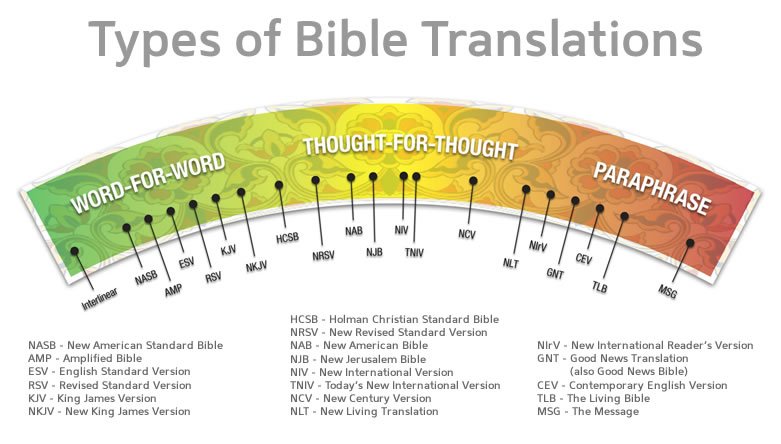
Iron Sharpens Iron
Understanding Bible Translations
Translation Recommendation
There are many different Bible translations available to read. Some of the most popular include the King James Version (KJV), the New International Version (NIV), and the English Standard Version (ESV). Each translation provides a different way of expressing the original texts. Some are closer to the original words in the translation, whereas others focus on translating the thoughts using modern English.
At Exchange Church, within our Church Service, Kids Church & Youth Ministry, we use the English Standard Version (ESV). The ESV provides an excellent interpretation of the original biblical languages (Word for Word), balanced with being comprehensible in the English language.
Use the above diagram to see where the translation you use sits and maybe consider using an ESV bible alongside what you currently use.
Different Translation Example
Bible Translations
Different Bible translations exist because language and culture are always changing. Translators are constantly striving to make the Bible accessible to a wider audience by making the text easier to understand in different languages, dialects, and cultures. Translations also help bridge the gap between languages and cultures, allowing people from different backgrounds to connect with the same scriptures and gain a better understanding of the Bible’s message.
The original texts of the bible are written in Hebrew & Greek, which explains why skilled translators are needed in conveying the message in another language. Different Bible translations also help provide a more accurate translation of the original text by taking into account the nuances of different languages. Ultimately, different Bible translations enable a greater number of people to access and understand the Bible’s message in a way that speaks to them.
Why so many English Translations?
It’s true that there are many different translations of the Bible in English, and this can be confusing for sure. However, it’s important to note that all translations are based on the same ancient texts and manuscripts.
The differences between translations come down to the translators’ understanding and interpretation of the original texts. Each translation is an attempt to communicate the meaning of the ancient texts in the language and culture of its readers. This means that some passages and words are translated differently in different versions. In fact, having multiple translations can sometimes give us a clearer understanding of the original text. So while there may be differences between translations, they are all based on the same ancient texts and manuscripts.


